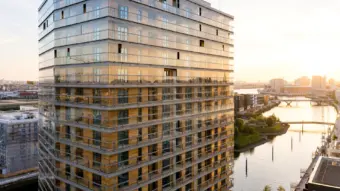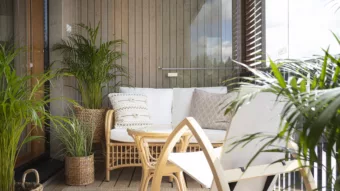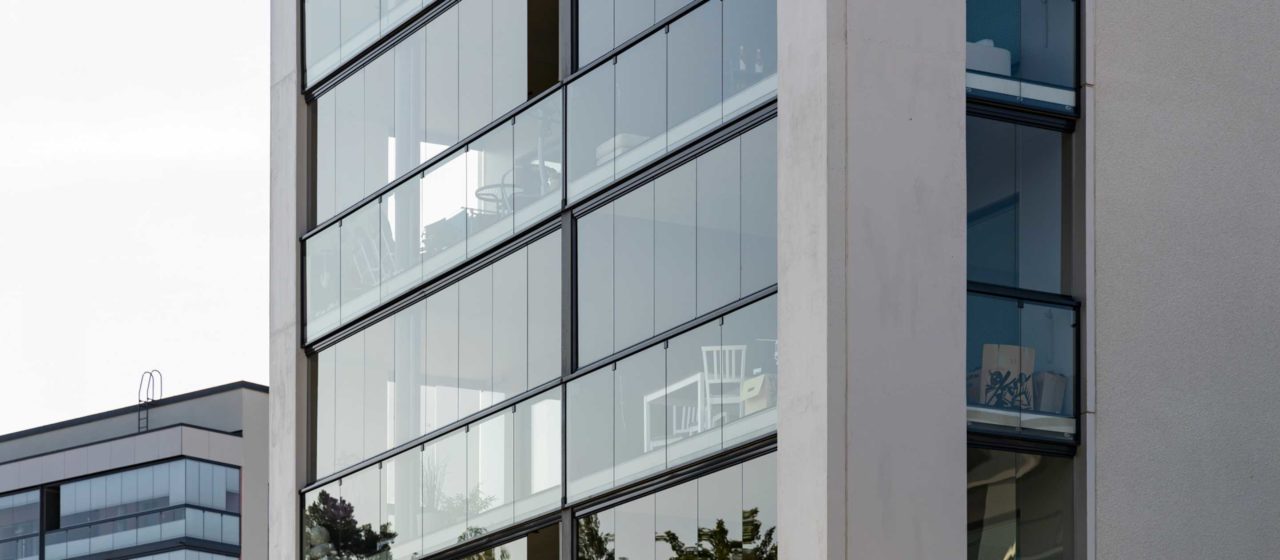
Balcony glazing protects structures and reduces renovation needs
The urbanisation in the 1960s has significantly contributed to the increased popularity of balconies. The target serviceable life of balconies is around 50 years, but balconies don’t necessarily withstand tough weather conditions as long as this. The serviceable life is affected by the surface disintegration, structural quality and water proofing method of the balcony. Balcony glass installations and water guidance arrangements will reduce the intensity of surface disintegration. More than 75 % of all balconies in Finland have been provided with glazing systems. More than 90 % of the balconies in new multi-storey buildings are provided with glazing systems during the construction stage already.
The protection effect provided by balcony glass panes will extend the serviceable life of balcony structures by 5 to 10 years. If the balcony is provided with glass panes, when the balcony structure is undergoing a large-scale renovation, this will extend the serviceable life by a further 25 to 30 years. Instead of renovation, balconies may be replaced with totally new ones, which makes it possible to increase them in size and provide the entire building with a more modern appearance. These actions will also improve the housing comfort and increase the value of the property. On top of everything else, the new balcony will last up to 60–130 years, if serviced regularly.
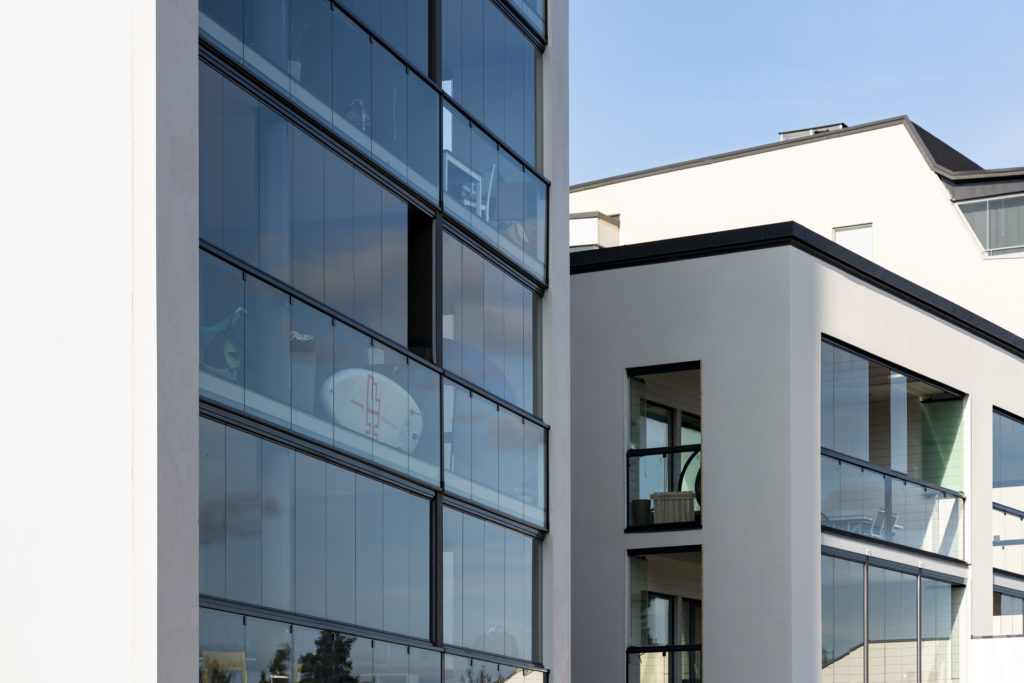
The facade of a multi-storey building after a balcony renovation
The balcony in old buildings is often large enough only for a table and two chairs. Moreover, the view over a solid balustrade is almost next to nothing, and, thus, the balcony is barely used, or it is only used as a kind of storage. A new glazed balcony provides an ideal and roomy place for you to chill out on a settee or gather your entire family around the table for a meal. Another point is that you can enjoy the view unrestrictedly from your balcony. The glazed balcony is like an additional room to your apartment. Furthermore, it is easier to sell an apartment, if it comes complete with a balcony. Due to the added value of the balcony, old multi-storey buildings have been retrofitted with balconies.
Benefits from balcony glazing installations
The glazing protects your balcony, gives a face-lift even to old balconies and provides you with some extra space that is both cosy and useful. The glazing makes it possible to use the balcony more often on a daily basis and extends its usability by many months per year. The glazing will keep your balcony furniture protected from wind, rain and pollen. A well-furnished balcony is a safe place to stay for your children and pets. It is also a great place to take care of a little garden. Furthermore, the glazing has been discovered to bring in energy savings, because the temperature of the glazed balcony is typically from 2 to 15 °C warmer than outside air, depending on the location and time of the day. The fact that air is warmer inside the balcony will reduce the thermal loss of exterior wall structures by 15 to 25 %, and, thus, distribute economically beneficial energy savings. According to studies, the heating energy savings, brought about by the balcony glazing, will typically vary from 2 to 20 % in the European area. The balcony glazing will also reduce the amount of ambient noise that is heard indoors. Laboratory measurements have indicated that the sound-insulating capacity of the balcony glazing varies from 12 to 27 dB, depending on the glazing product and the insulation solution in question. However, the sound-insulating capacity of balconies will typically range from 4 to 16 dB, due to structural reasons.
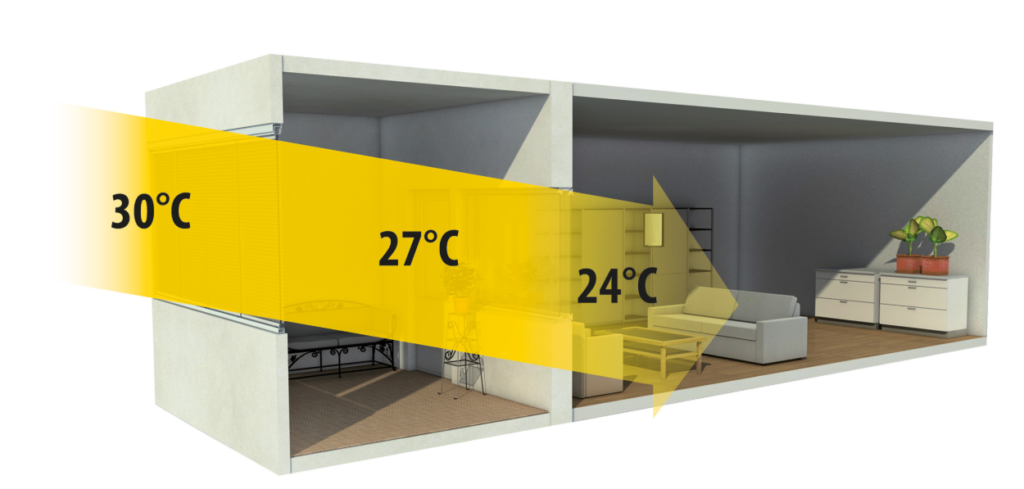
The conditions on the balcony will remain comfortable and interior spaces will not get too hot, provided that you use pleated shades in the glass panes and open the panes for airing purposes on a regular basis. The glass panes must be kept closed in winter and, every now and then, open in summer.
The energy savings of the glazed balcony amount, on average, to 300 kWh, as compared with a balcony with no glazing. There are more than one million balconies that have been provided with Lumon glazing products in the world. Their energy savings amount to 300 GWh per year.
Thanks to the glazing system, the annual usability time of the terrace will thus be 1 to 2,5 months longer. Some of the terraces can be in full use all year round. Should people in Finland witness a great deal of sunshine in February, the temperature could rise up to around 20 °C.
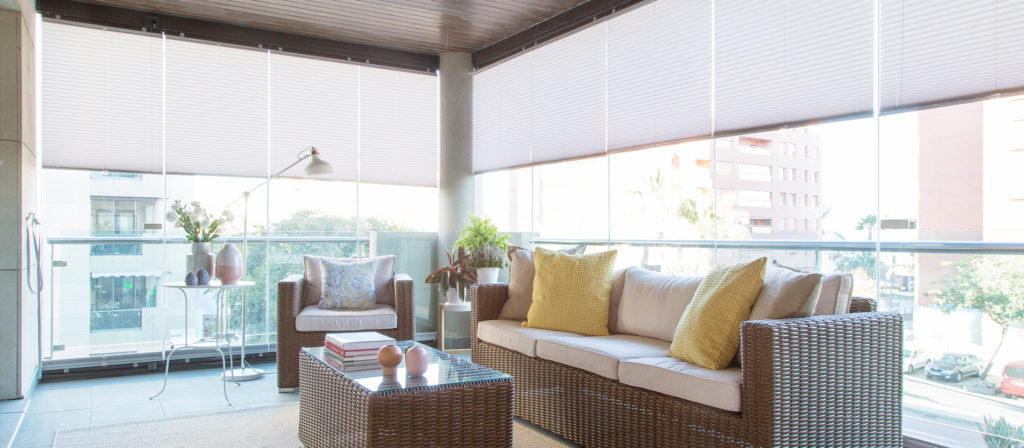
-
Wooden buildings and glazed balconies: A perfect blend of design and sustainability
Read more…The architectural landscape is evolving, with sustainability and innovative design at the forefront. Wooden buildings, coupled with glazed balconies, offer a unique blend of natural materials and modern aesthetics. For the construction industry, this combination presents an exciting opportunity to create stylish, energy-efficient spaces that meet the growing demand for sustainable building solutions.
-
[PRO BLOG] Maximizing balcony space: Smart solutions for modern living
Read more…Balconies have long been a valued feature in residential architecture, offering a connection to the outdoors and enhancing the aesthetic appeal of buildings. However, their role has evolved significantly in recent years. No longer just decorative, balconies are now valuable extensions of indoor living spaces, particularly in high-rise urban settings. With the rise of urbanization and changing residential needs, the demand for multifunctional, adaptable, and energy-efficient balcony solutions has never been greater.
-
[PRO BLOG] Lumon eRailing: A new opportunity for solar energy in urban living
Read more…Construction and housing are undergoing a transformation as energy efficiency and sustainable solutions become increasingly important. Lumon eRailing is a new solution that integrates solar energy into urban living. It allows housing companies to generate electricity from their balconies without compromising the appearance or functionality of buildings.
